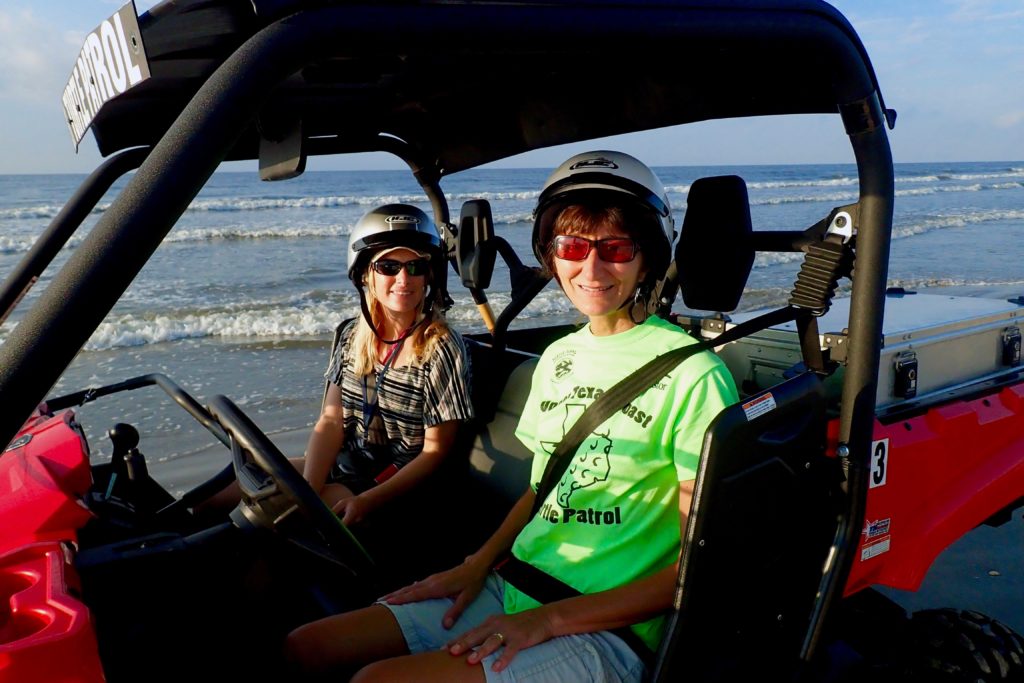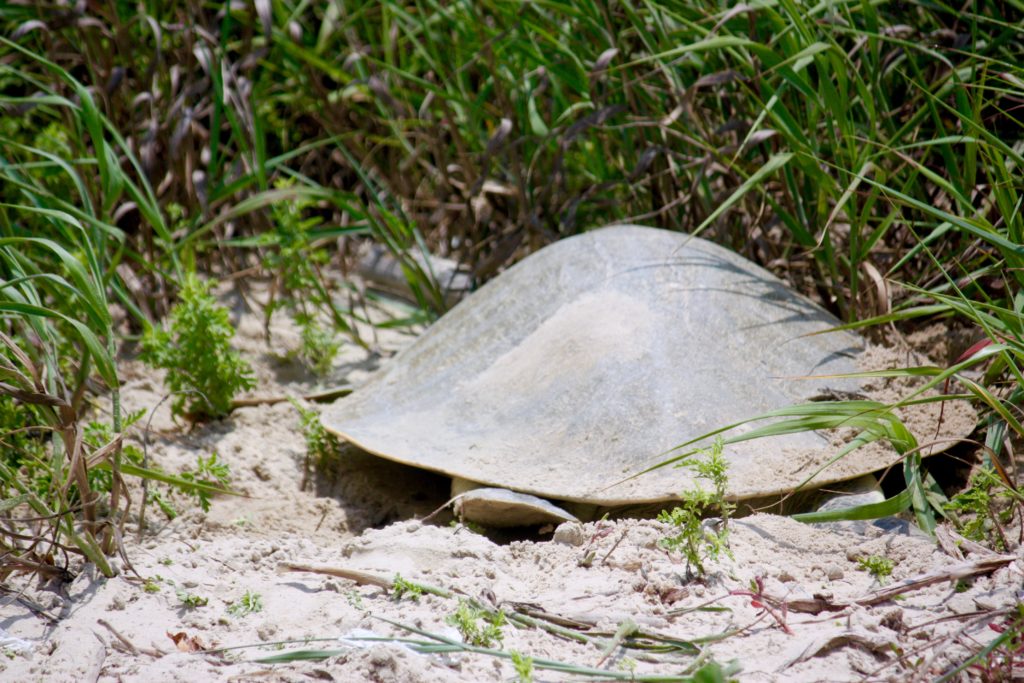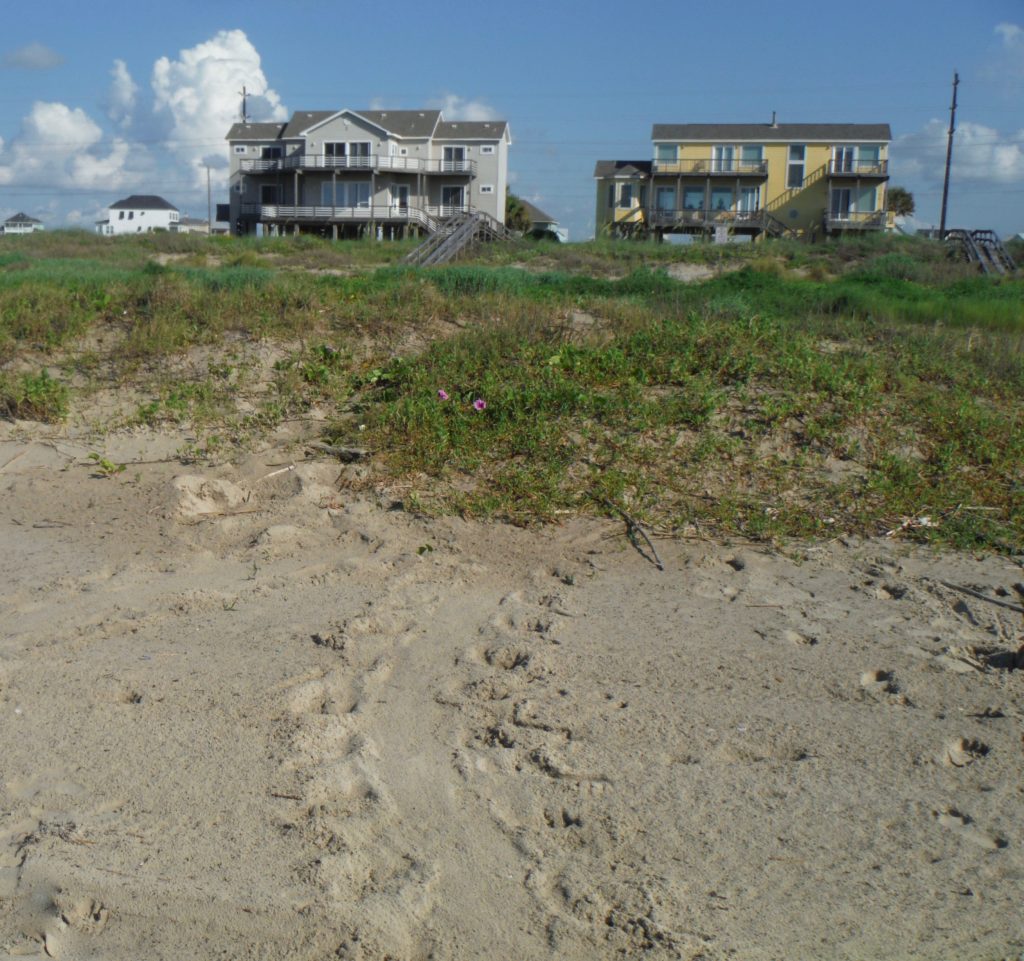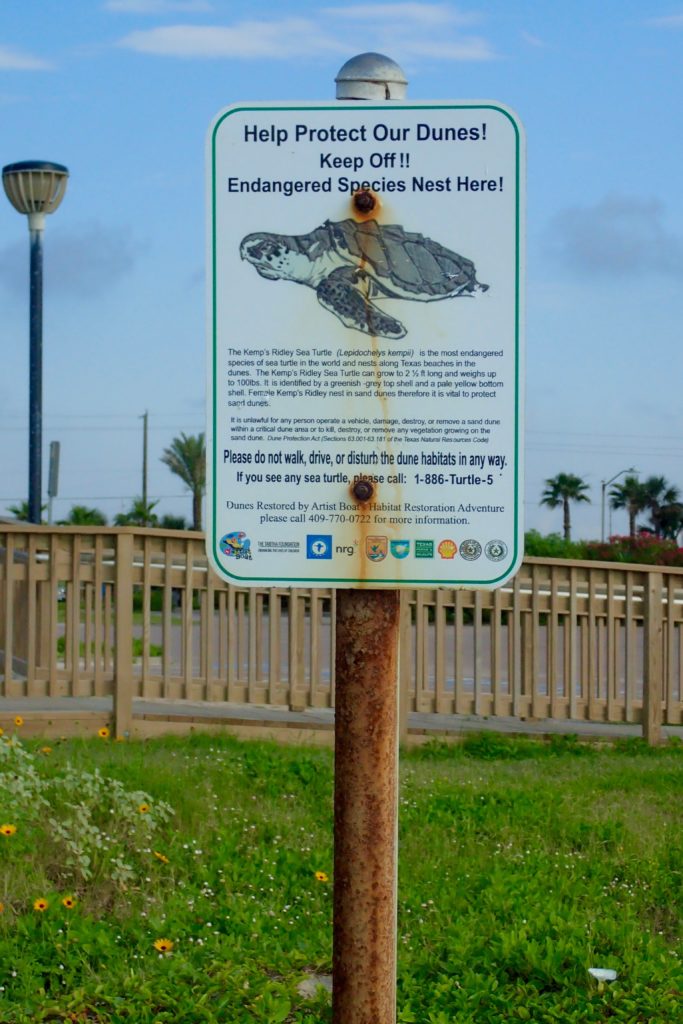Kemp's Ridley Sea Turtle Patrol
Headline photograph is a nesting Kemp's Ridley sea turtle at Surfside Beach, Texas on May 27, 2016 by Jerry Pettit.
One of the most endangered sea turtles in the world nests along the Gulf Coast shorelines of Texas and Mexico. Every April to August, the sea turtles make their way onto the sand and into the dunes to lay their eggs. The Kemp’s Ridley is the only species of turtle to nest during daylight hours. Daily, Turtle Island Restoration Project in collaboration with Texas A&M University at Galveston patrols the shores of the Upper Texas coast with the help of over 200 volunteers looking for turtles and/or clues to the buried nests. This past week, I was invited to an early morning turtle patrol on Galveston Island. The director for the Gulf of Mexico, Joanie Steinhaus, educates volunteers and the public about Sea Turtle safety.
 Joanie Steinhaus and I patrolling for sea turtles on Galveston Island.
Joanie Steinhaus and I patrolling for sea turtles on Galveston Island.
The Kemp’s Ridley is the smallest species of sea turtle, weighing on average 60 to 100 pounds with a heart shape carapace or backside shell growing to around 30 inches. Shallow coastal areas, bays, and lagoons along the Gulf Coast and the Atlantic are the sea turtles preferred habitat. They feed on mollusks, crustaceans, jellyfish, fish, algae or seaweed. Due to living so close to shore, fishing and shrimping operations are the biggest threats to the Kemp’s Ridley. The species is considered critically endangered. Sexual maturity begins around 10 to 12 years of age. Mating takes place offshore. When the female is ready, she arrives on the coast to lay eggs. The process takes about 45 minutes to an hour. After finding a suitable spot in the sandy dunes, she excavates a hole with her back flippers. Next, she deposits her eggs. On average, a typical nest contains 100 ping-pong sized rubbery eggs. The female covers the hole and pats down the sand in dancing motions. Finally, she returns to the sea. The eggs will hatch in 50 to 60 days. The tiny hatchlings will make their way to the water without any maternal care. One day in the distant future, the mature females will return to the same beach to nest.
 A Kemp's Ridley female covering her nest on Surfside Beach. Photo by Jerry Pettit
A Kemp's Ridley female covering her nest on Surfside Beach. Photo by Jerry Pettit
 Returning to the sea. Photo by Jerry Pettit
Returning to the sea. Photo by Jerry Pettit
During the turtle patrol, we are mainly looking for turtle tracks, “C’ shaped indentions surrounding a characteristic drag line. During the tourist season, tire marks and disturbed sand makes it difficult to detect. From Bolivar to Freeport, there are 6 driving routes and 5 walking routes patrolled twice a day. According to Steinhaus, “This year’s storms and high tides are also making it more challenging to see the tracks.” Only 3 nests have been discovered in 2016 along the Upper Texas Coast. However, more than 175 have been identified elsewhere in Texas. Steinhaus contends that in 2015 there were 13 nests. Maybe the storms are a factor. Another possible reason for the decrease in detected nests is that females only reproduce every few years. No one knows for sure but there is hope for more nests in the future.
 Turtle Tracks, photo credit by Joanie Steinhaus, Director for the Gulf Coast Turtle Island Restoration Network
Turtle Tracks, photo credit by Joanie Steinhaus, Director for the Gulf Coast Turtle Island Restoration Network
Once a nest is detected, the eggs are excavated by permitted personnel and taken to an incubation facility. The eggs cannot be left on the beach because predators like snakes, birds, and coyotes will uncover the eggs for food. When the eggs hatch, the turtles are released on the beach and begin life in the sea.
How You Can Help
-If you see a sea turtle or tracks call 866-Turtle5. Do not attempt to touch the turtle or disturb a nest.
-If you are an angler and hook a sea turtle, please call 866-Turtle5. Leaving a fishhook in a sea turtle’s mouth is a serious impairment to a turtle’s ability to feed. Although sea turtles are protected, anglers will not get in trouble if they call the number. Often the person on the telephone will walk the fisherman through how to retrieve the hook or will send help as soon as possible.
-Reduce your consumption of plastic, especially single-use plastic bags or water bottles. Sea Turtles view plastic in the ocean and mistake it for jellyfish and other food. Don’t leave your trash at the beach or along any waterway. Take it and any other plastic waste you may find with you.
-Eat only certified sustainable seafood. The more we ask for it, the more the fishing and shrimping industries will change to more sustainable practices.

Thank you to Joanie Steinhaus.
If you want to learn more, please visit www.seaturtles.org Here is a quick minute long video of a female Kemp's Ridley nesting on Surfside Beach and returning to the Gulf. She will win your heart. Click the link below:
Posted by the Turtle Island Restoration Network, video by Steven Trousdale.

Leave a comment
Please note, comments must be approved before they are published